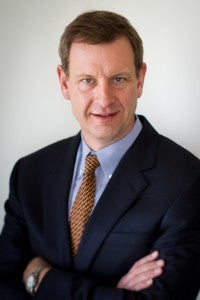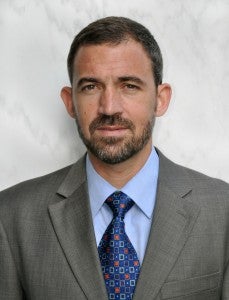By: Scott Robinson, EDF Energy Intern and Energy & Earth Resources Fellow at The University of Texas at Austin, Jackson School of Geosciences
Earlier this month, Greentech Media released their “Top Ten Utility Smart Grid Deployments in North America.” These are utilities that deserve recognition—while most experts agree that bringing the transformative power of information technology to the grid is critical to achieving a clean, low-carbon economy, being an early adopter means carrying a certain amount of risk. A utility’s willingness to take on this risk demonstrates a long-term commitment to its customers. EDF is championing well-designed smart grids as the path to abundant, cheaper and cleaner energy. Because utilities will be responsible for building and operating this new “energy internet,” our push for smart grid innovation has led to productive partnerships with several of Greentech Media’s top ten.
In Austin, Texas, we are working with Austin Energy and the University of Texas, among others, to develop the Pecan Street smart grid demonstration project in the Mueller community: a real neighborhood and living laboratory that will allow researchers to better understand what smart grid will look like on the ground, as well as how individual technologies—from smart appliances to residential solar PV to electric vehicles—will interact to enable greater reliance on renewable and community-based resources. For consumers, this means real-time insight into how they’re using energy and its true cost: understanding its source and emissions to help them make decisions that save money and shrink their environmental footprint.
In Charlotte, North Carolina, EDF is working with Duke Energy and others on the Envision Charlotte project to increase energy management in big downtown buildings, improve local air quality and reduce water consumption and waste in a concentrated urban area. We are helping to implement the use of smart grid technologies with the ultimate goal of reducing energy consumption by 20 percent in 60 high-rises over five years: through better information for building occupants about their energy use and tools enabling them to act on that insight. Also, during the summer of 2011, two EDF Climate Corps fellows reviewed three buildings in Mecklenburg County (where Charlotte is located) and found energy efficiency measures that could save the county more than $500,000 in just five years.
In California, EDF has worked on multiple cutting-edge projects, including working directly with San Diego Gas and Electric (SDG&E) – the nation’s most intelligent utility – and developing a “scorecard ” to evaluate the Smart Grid Deployment Plans of California’s three largest investor-owned utilities’ – SDG&E, Pacific Gas & Electric (PG&E) and Southern California Edison (SCE) for their overall direction in meeting environmental and savings goals. We will continue to drive the benefits from the smart grid for Californian’s utility bills, health and environment.
To maximize environmental returns on these multi-billion dollar investments in grid modernization, it is critical that utilities develop holistic plans and build open platforms that give customers access to new energy saving technologies and “apps” and enable scale integration of renewables and electric vehicles. Done right, the smart grid will drive the clean energy revolution we need—helping utilities reliably deliver power, securing our energy independence, increasing our ability to compete in the global clean energy market, growing our economy and empowering consumers—all while protecting our air, water, and health. EDF is committed to finding ways that allow utilities and consumers to reap the benefits of their investment in the future.
Our partnerships with utilities have led to a greater understanding of the smart grid as an emerging solution to today’s environmental and electricity problems. We look forward to continuing our work with these energy pioneers and expanding our partnerships to help other utilities get their projects off the ground.













